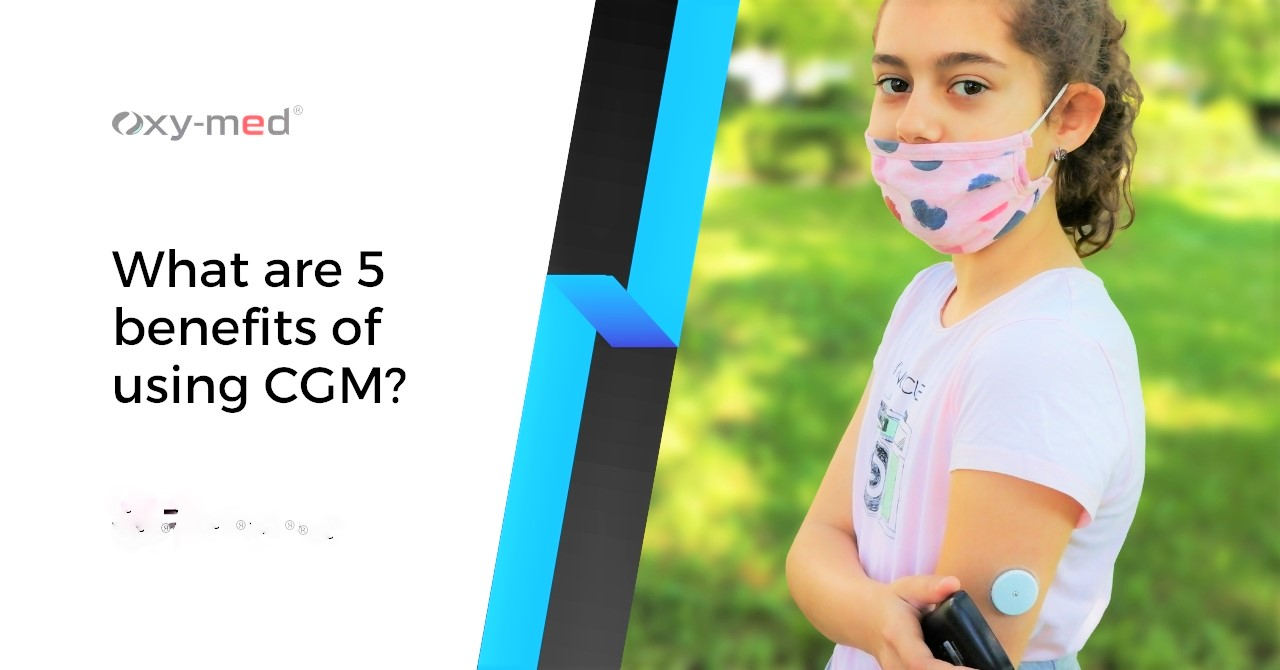Posted on 2023-09-03 13:17:07

Are you looking for a way to better monitor and manage your health? Look no further, because CGM or Continuous Glucose Monitoring is here! This revolutionary technology offers numerous benefits which can help improve your overall well-being. From helping you detect low symptoms of hypoglycemia before they arise to enabling more accurate diabetes management - these are just some of the many perks that CGM can provide you with. Read on to learn more about the five key benefits associated with using this remarkable technology!
Managing blood sugar levels is crucial for people with diabetes because high blood sugar (hyperglycemia) and low blood sugar (hypoglycemia) can both have serious health consequences. Consistently high blood sugar levels can damage blood vessels, nerves, and organs over time, leading to complications such as heart disease, kidney disease, vision loss, and nerve damage. High blood sugar levels can also increase the risk of infection and slow down the body's healing process.
On the other hand, low blood sugar levels can cause symptoms such as dizziness, confusion, and seizures, and in severe cases, can even lead to unconsciousness or coma. Hypoglycemia can occur when there is too much insulin in the body, not enough food, or too much physical activity without enough food or insulin adjustments. Managing blood sugar levels through medication, diet, and exercise is essential for people with diabetes to minimize the risk of complications and maintain good health. Continuous glucose monitoring (CGM) is a powerful tool that can help individuals with diabetes make more informed decisions about their treatment and reduce the risk of extreme blood sugar fluctuations.
1. Real-time monitoring of glucose levels
Continuous Glucose Monitoring (CGM) provides real-time data on blood sugar levels throughout the day and night, helping people with diabetes make informed decisions about their treatment. By identifying patterns and trends in blood sugar levels, individuals can adjust medication, diet, and exercise to better manage their diabetes and avoid dangerous highs and lows. Real-time monitoring also gives peace of mind and the ability to take prompt action in response to alerts about low blood sugar readings.
2. Personalized insights and trends analysis
CGM devices track glucose levels in real-time and provide alerts when levels are too high or low. They collect data on glucose levels, which can be analyzed to identify patterns and trends over time, helping patients make informed decisions about diabetes management. Some CGM devices use predictive analytics to forecast glucose levels based on past trends, allowing patients to prevent fluctuations. CGM devices can also be integrated with diabetes management apps for a more comprehensive view of health data.
3. Reduced HbA1c levels
Continuous glucose monitoring is a technology that can help diabetic patients manage their blood glucose levels more effectively. CGM works by using a small sensor that is placed under the skin to measure glucose levels in the interstitial fluid (fluid between the body's cells). This data is then sent to a receiver or smartphone app, allowing patients to track their glucose levels in real time and make more informed decisions about their diabetes management.
CGM has been shown to be effective in reducing HbA1c levels in diabetic patients. HbA1c is a blood test that measures a person's average blood glucose levels over the past 2-3 months. The higher the HbA1c level, the higher the risk of diabetes-related complications. CGM helps to reduce HbA1c levels by providing patients with more accurate and frequent information about their glucose levels. This allows patients to make more informed decisions about their diet, exercise, and medication use, and adjust in real-time to maintain optimal glucose levels.
4. Improved quality of life
CGM is a new method for monitoring blood glucose levels that is less painful and more convenient than traditional fingerstick tests. CGM provides more accurate and frequent glucose data, helping patients make better decisions about their diabetes management, reducing the risk of hypoglycemia or hyperglycemia, and preventing diabetes-related complications. CGM also allows patients to monitor their glucose levels in real-time and make adjustments to their management plan as needed, providing greater freedom and flexibility in daily activities.
5. Better communication with healthcare providers
Continuous glucose monitoring (CGM) is more accurate than traditional methods, allowing healthcare providers to make better treatment decisions with real-time data. CGM devices can easily share data with providers, helping them access patient information more easily. CGM can also help patients identify patterns in their glucose levels that may be missed with traditional monitoring methods. By using CGM data, patients and healthcare providers can develop personalized treatment plans together, promoting shared decision-making.